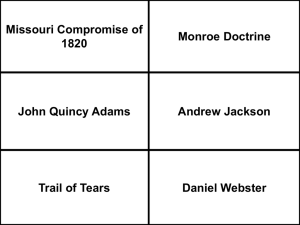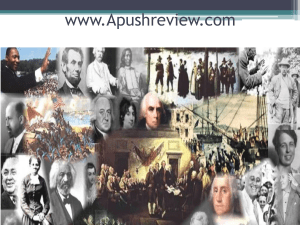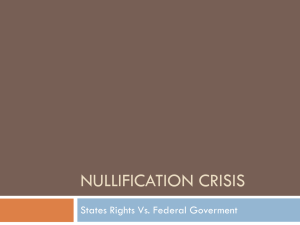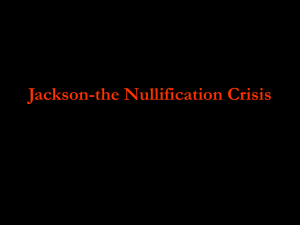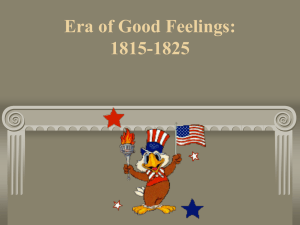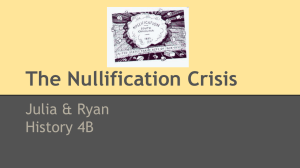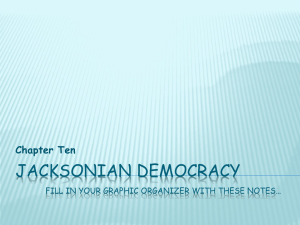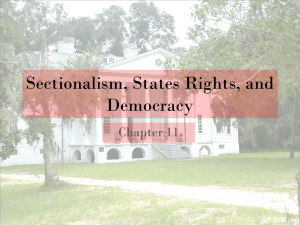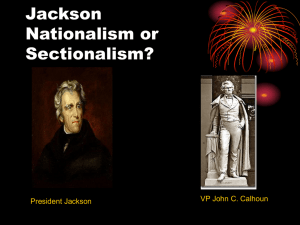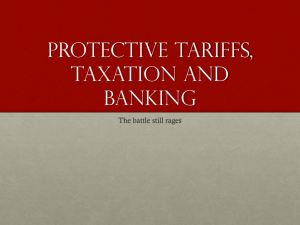Chapter 10 Quiz 2 Review - East Richland Christian Schools
advertisement
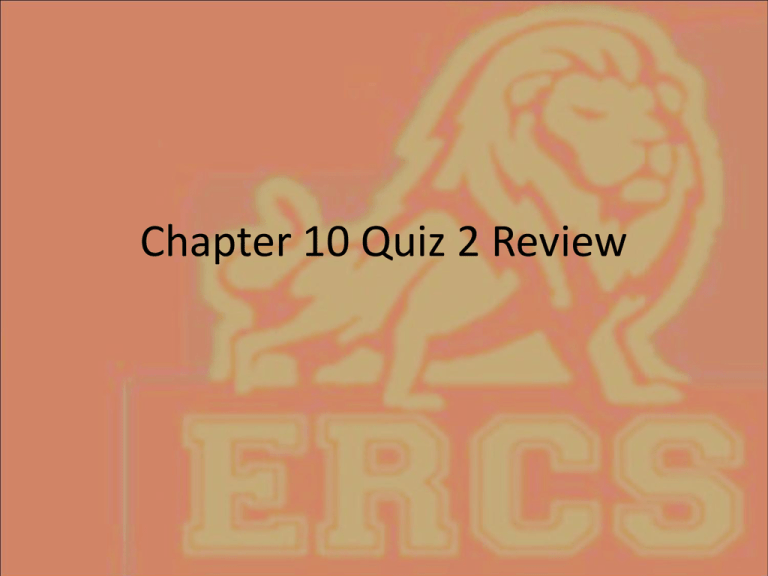
Chapter 10 Quiz 2 Review • Which tariff caused the nullification crisis? – tariff of 1816 – revised tariff of 1832 – “Tariff of Abominations” (1828) – Compromise Tariff of 1833 • “Tariff of Abominations” (1828) • What bank system did Jackson set up to replace the National Bank? – subtreasury system – independent treasury – pet banks – spoils system • pet banks • What Indian tribe attempted to keep its lands through legal action? – Fox – Sauk – Cherokee – Seminole • Cherokee • What was Jackson’s close circle of advisors called? _______________________ • Kitchen Cabinet • What policy did Jackson adopt toward the Indian problem? __________________ • Indian Removal Policy – A) John C. Calhoun – B) Sequoyah • • ___ vice-president who proposed the doctrine of nullification • John C. Calhoun – A) John C. Calhoun – B) Sequoyah • • ___ creator of a written Cherokee alphabet • Sequoyah – – – – – A) national convention B) nullification C) platform D) spoils system E) third party • • • ___ replacement of government officeholders with supporters of the new administration • D) spoils system – – – – – A) national convention B) nullification C) platform D) spoils system E) third party • • • ___ view that states can reject congressional acts they deem unconstitutional • B) nullification – – – – – A) national convention B) nullification C) platform D) spoils system E) third party • • • ___ competition against the two major political parties • E) third party – – – – – A) national convention B) nullification C) platform D) spoils system E) third party • • • ___ a written statement describing where a party stands on various issues • C) platform – – – – – A) national convention B) nullification C) platform D) spoils system E) third party • • • ___ a gathering of state delegates to nominate the party’s presidential candidate • A) national convention – A) Compromise Tariff of 1833 – B) Force Bill – C) Specie Circular of 1836 – D) “Tariff of Abominations” – E) “Trail of Tears” • • ___ extremely high protectionist legislation that led to the nullification crisis • D) “Tariff of Abominations” – A) Compromise Tariff of 1833 – B) Force Bill – C) Specie Circular of 1836 – D) “Tariff of Abominations” – E) “Trail of Tears” • • ___ the grant of war powers against South Carolina • B) Force Bill – A) Compromise Tariff of 1833 – B) Force Bill – C) Specie Circular of 1836 – D) “Tariff of Abominations” – E) “Trail of Tears” • • ___ tariff designed to end the nullification crisis by reducing the tariff rates • A) Compromise Tariff of 1833 – A) Compromise Tariff of 1833 – B) Force Bill – C) Specie Circular of 1836 – D) “Tariff of Abominations” – E) “Trail of Tears” • • ___ prohibition of anything except hard money for the purchase of public land • C) Specie Circular of 1836 – A) Compromise Tariff of 1833 – B) Force Bill – C) Specie Circular of 1836 – D) “Tariff of Abominations” – E) “Trail of Tears” • • ___ forced removal of the Civilized Tribes from their homeland • E) “Trail of Tears” • True/False • • ___ Nullification is another word for secession • False • True/False • • ___ After years of fighting, the United States army was still unable to remove all of the Seminoles from Florida • True • True/False • • ___ the Cherokee nation adopted a written language, European-style farms, and regular communities with roads and schools. • True
